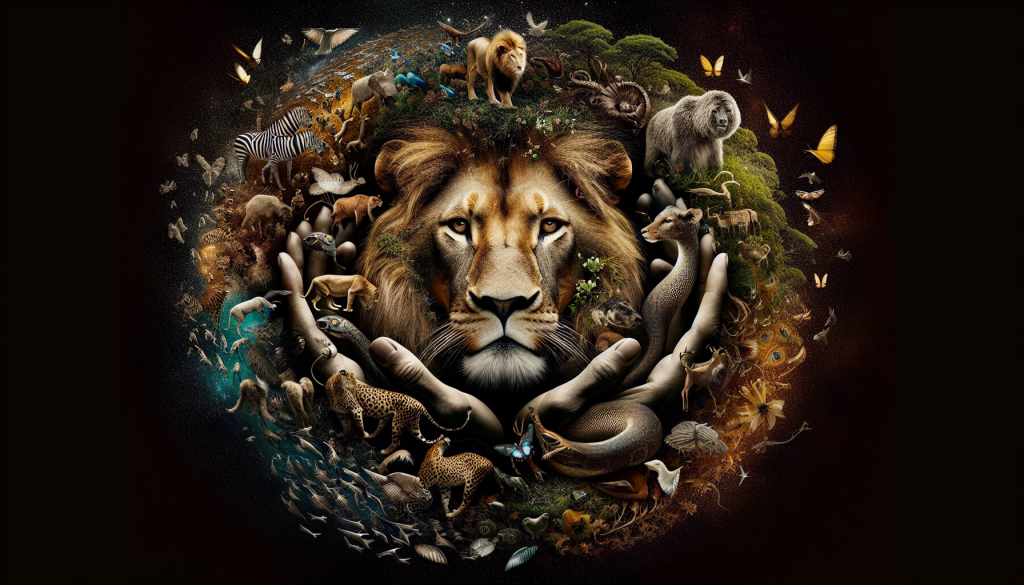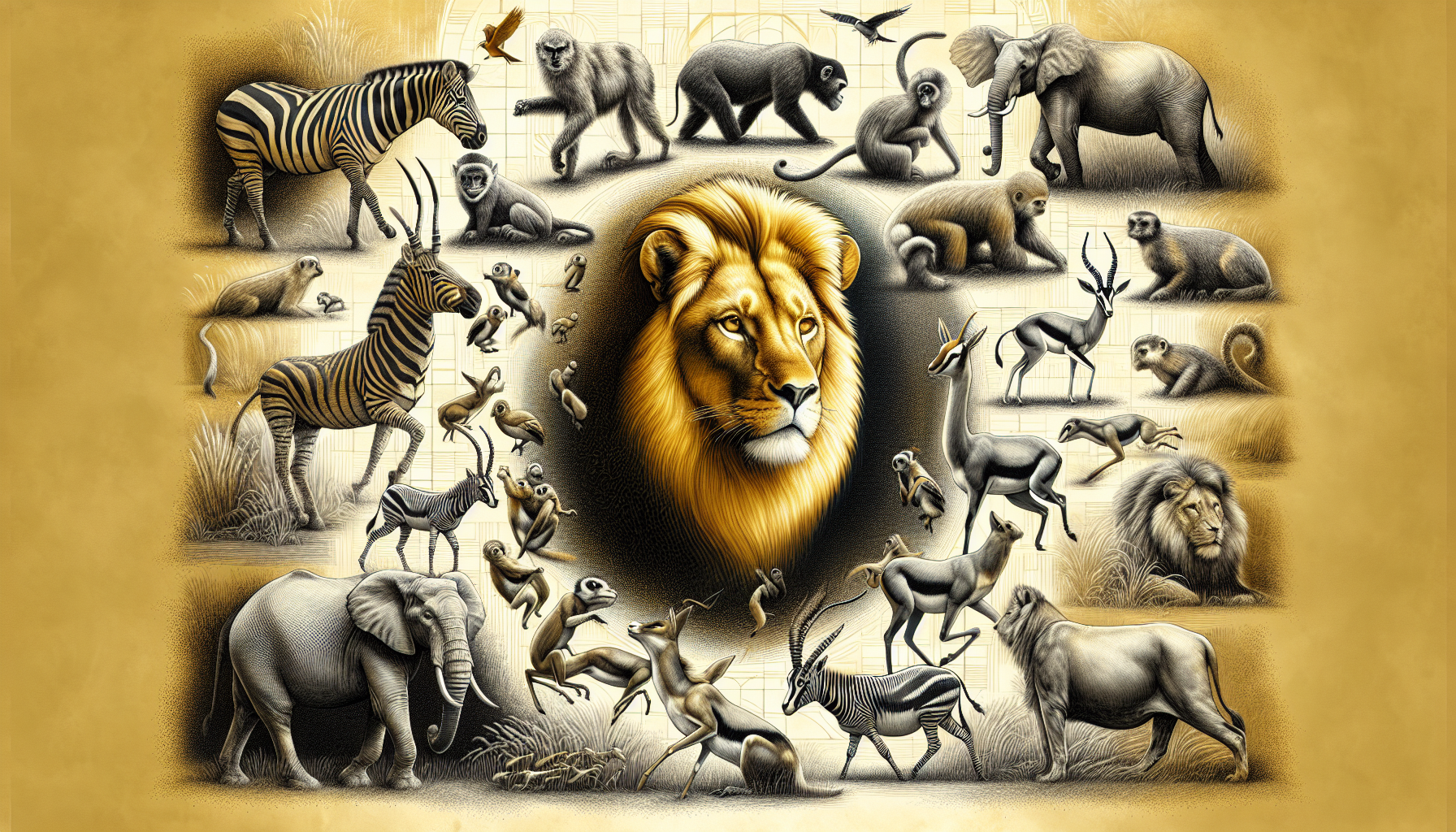Have you ever wondered how lions interact with other wildlife in their natural habitat? In this article, we will explore the fascinating world of lion behavior and understand how they interact with various species. From their interactions with elephants and giraffes to their hunting techniques alongside hyenas and cheetahs, we invite you to ask the lion experts and uncover the secrets of these majestic predators. So, buckle up and get ready to embark on a journey into the wild world of lions.

Interactions Between Lions and Herbivores
Lions are well-known as predators, and one of the primary interactions they have with herbivores is predation. Lions primarily hunt large herbivores such as wildebeest, zebra, and buffalo. These prey animals are a crucial source of food for lions and their hunting strategies are highly adapted to successfully capture them. Lions use their strength, agility, and teamwork to bring down their prey, often targeting weak or injured individuals.
In addition to predation, lions also compete with other herbivores for limited resources such as food and water. During periods of drought or when certain areas become overcrowded, competition for resources can become fierce. Lions may need to expand their hunting grounds or seek out alternative prey when their preferred prey is scarce. This competition can have a significant impact on herbivore populations, as it influences the availability of resources and the distribution of certain species.
Interactions Between Lions and Carnivores
Competition with other carnivores is another important interaction that lions experience. In some areas, lions compete with other large predators such as hyenas and cheetahs for food and territory. Lions are known to dominate over hyenas, often stealing their kills or driving them away from a carcass. This intense rivalry can lead to conflicts between the two species, as they are both highly territorial and protective of their resources.
In the case of cheetahs, competition for prey is the primary interaction between the two species. Cheetahs are known for their incredible speed and agility, which gives them an advantage in hunting. However, lions are more powerful and tend to dominate in direct confrontations. As a result, cheetahs will often avoid areas where lions are present to reduce the risk of competition or potential conflicts.
Interactions Between Lions and Hyenas
The interactions between lions and hyenas are characterized by an intense rivalry and competition. Both species are highly social and live in hierarchical groups known as prides (for lions) and clans (for hyenas). These social structures play a crucial role in determining the dynamics between the two species.
Conflicts between lions and hyenas often occur over food and territory. Lions are known to steal kills from hyenas, and hyenas sometimes attempt to scavenge lion kills. This competition can lead to aggressive confrontations, with both species fighting to assert dominance and secure their resources.
Interactions Between Lions and Cheetahs
When it comes to interactions between lions and cheetahs, competition for prey is the main factor. Lions are opportunistic predators and will not hesitate to steal a cheetah’s kill if given the chance. Cheetahs, on the other hand, are more cautious and try to avoid direct confrontations with lions.
To minimize the risk of competition, cheetahs often hunt during the day when lions are less active. They also tend to select areas with less lion activity, such as open grasslands where their superior speed can give them an advantage in outrunning other predators. Overall, the interactions between lions and cheetahs are limited, as both species have developed strategies to minimize direct competition.

Interactions Between Lions and Leopards
Lions and leopards often share overlapping territories, which can lead to occasional clashes over food. While lions tend to dominate in size and strength, leopards have exceptional climbing abilities that allow them to retreat to trees when faced with confrontation.
Territorial overlap can be a source of tension between the two species, with each trying to defend their territory and resources. However, leopards generally try to avoid confrontations with lions by being more discreet and elusive. By staying hidden and hunting at different times, leopards can minimize the risk of encountering lions and reduce the likelihood of conflicts.
Interactions Between Lions and Elephants
Interactions between lions and elephants are typically characterized by avoidance and minimal interactions. Both species have distinct social structures and occupy different ecological niches, which reduces the likelihood of direct conflicts.
Lions generally avoid adult elephants due to their formidable size and strength, as an encounter can pose a significant risk to the lions. Elephants, on the other hand, are more likely to exhibit defensive behavior in the presence of lions, especially if they perceive a threat to their young. While rare cases of aggression by elephants towards lions have been observed, these interactions are uncommon.
Interactions Between Lions and Giraffes
Lions are not typically known for preying on giraffes, as their size and powerful kicks can pose a significant risk to the lions. However, there have been rare instances of lions hunting giraffes, usually targeting young or weakened individuals.
In general, lions and giraffes tend to avoid each other and have limited interactions. Giraffes have the advantage of height, allowing them to potentially spot lions from a distance and avoid their presence. Lions, being primarily ground-dwelling predators, do not have the same advantage and may choose to focus their hunting efforts on other, more accessible prey.
Interactions Between Lions and Buffalos
Predation on buffalos is one of the most intense interactions between lions and herbivores. Buffalos are formidable opponents and have a strong herd instinct, making them a challenging prey for lions. However, lions have developed specialized hunting strategies to target buffalos, often relying on strategic teamwork to bring down these massive creatures.
While hunting buffalos, lions put themselves at risk of injury, as buffalos have the ability to fight back fiercely. The powerful horns and sheer strength of buffalos can cause significant harm to lions, making buffalo hunts dangerous yet necessary for the survival of lion prides. These intense interactions shape both the behavior and population dynamics of lions and buffalos.
Interactions Between Lions and Rhinos
Similar to elephants, interactions between lions and rhinos are characterized by avoidance and minimal interactions. Rhinos have a formidable size and thick skin, making them less vulnerable to lion attacks. Both black and white rhinos have been observed speeding up when encountering lions, attempting to outrun or intimidate them.
While rare cases of predation on young rhinos have been documented, they are uncommon. Rhinos are typically alert and can rely on their acute sense of smell and hearing to detect lions at a distance, enabling them to take evasive action and minimize any potential conflicts.
Interactions Between Lions and Hippos
Interactions between lions and hippos are generally characterized by avoidance and limited interactions. Lions are well aware of the risks involved in tangling with hippos, particularly because of their aggressive nature and powerful bite. Hippos can be highly territorial, especially around water bodies, and are known to defend their territories aggressively.
Occasional clashes over territory may occur if lions encroach on a hippo’s space, but for the most part, both species tend to steer clear of each other. While lions may occasionally scavenge on hippo carcasses, they generally prefer to keep a safe distance from these formidable animals.
Overall, the interactions between lions and other wildlife are complex and dynamic, shaping the behavior and population dynamics of each species involved. These interactions are essential for maintaining the delicate balance of ecosystems and ensuring the survival of various animal species in the African wilderness.

